

To hit the ball correctly and get the best results, it is critical to understand and use the proper loft of your golf clubs. The loft angle impacts the ball’s flight
We have compiled a guide with pertinent information to assist you in understanding the loft of golf clubs and how it affects your shots.
- Wood Lofts
- Golf Club Loft Chart
- Wedge Lofts
- Iron Lofts
- Hybrid Lofts
- Golf Clubs’ Loft Comparison Table
1. Golf Club Loft Guide
To better understand every golf club type’s features, we will talk in-depth about their lofts in this comprehensive guide.
Here is a data table summarizing the loft ranges for several clubs before continuing.
Please remember that while some manufacturers offer a range of alternatives between these extremes, the values listed are for conventional lofted irons and more vigorous lofted game-improvement irons.
| Club Type | Standard Loft (degrees) | Game-Improvement Loft (degrees) |
| Driver | 8-12 | 7-11 |
| 3 wood | 15-18 | 14-17 |
| 5 wood | 19-22 | 18-21 |
| 3 iron | 18-21 | 17-20 |
| 4 iron | 21-24 | 20-23 |
| 5 iron | 24-27 | 23-26 |
| 6 iron | 27-30 | 26-29 |
| 7 iron | 30-34 | 29-33 |
| 8 iron | 34-38 | 33-27 |
| 9 iron | 38-42 | 37-41 |
| Pitching wedge | 42-46 | 41-45 |
| Gap wedge | 46-50 | 45-49 |
| Sand wedge | 54-58 | 53-57 |
| Lob wedge | 58-64 | 57-63 |
| putter | Not available | Not available |
Club lofts influence shot shape. Explore how lofts relate to fading and drawing in golf.
2. Wood Lofts
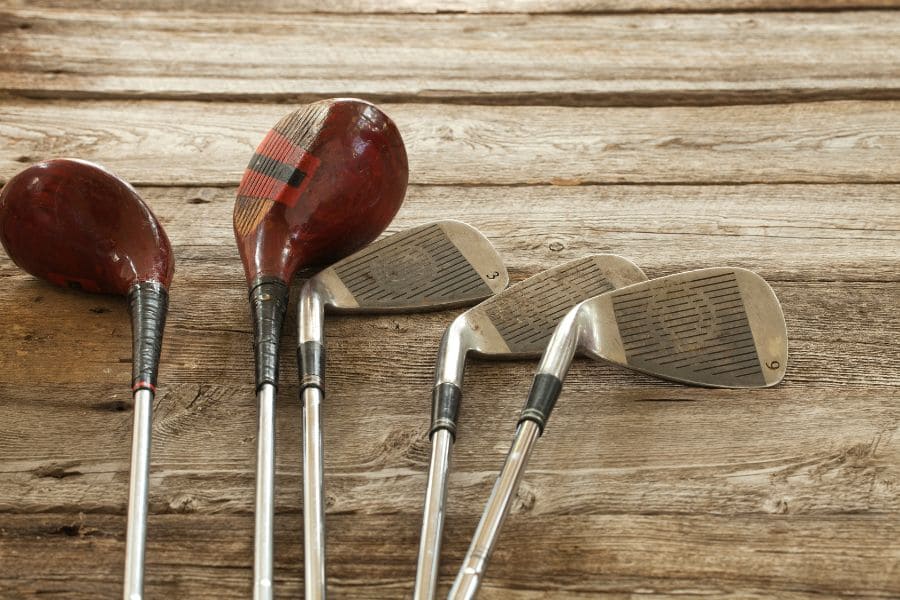

Compared to iron and hybrid clubs, wood clubs are renowned for having lower lofts of golf club, promoting greater distance. Let’s examine the lofts of several wood clubs in more detail:
· Driver Loft
The driver, often known as the 1-wood, is a critical club in a golfer’s bag because it is made primarily for long shots off the tee. Let’s use an illustration to examine the driver’s loft in greater detail:
Loft Range:
A driver’s loft varies typically from 8 to 12 degrees. Let’s use a driver with a 10-degree loft as an example.
It indicates a 10-degree angle between the clubface and the vertical plane. The angle between the clubface and the vertical plane will be narrower on a driver with a lower loft, like an 8-degree driver.
Distance Expansion:
Lower lofted golf club drivers are made to travel farther by generating a lower ball flight with less backspin.
For instance, a golfer with a higher swing speed can achieve a lower trajectory using a 10-degree driver, allowing the ball to travel further in the air and roll more when it lands.
Greater total distance off the tee may result from this.
Adjustability:
Many contemporary drivers have features that let golfers fine-tune the loft angle.
For illustration, suppose a driver has a loft sleeve that can be adjusted from 9 to 11 degrees.
Golfers can experiment with various loft settings to discover the loft setting that best fits their swing and desired ball flight characteristics.
By altering the loft, golfers may optimize launch circumstances and customize the driver to meet their unique demands.
Ball Position:
The ball must be positioned correctly to achieve the best launch circumstances when utilizing the driver.
For instance, a golfer utilizing a 10-degree driver might tee the ball higher. They can hit the ball with an upward angle of attack, also called a positive angle of attack, by raising the tee.
The dynamic loft, which combines the static loft of the club and the angle of attack at contact, is maximized with the aid of this upward strike.
Player considerations:
A driver’s loft choice is influenced by various variables and personal preferences.
For instance, a golfer who prefers a higher ball flight or has a slower swing speed may benefit from a higher lofted driver.
A golfer with an average swing speed and a propensity for a downward angle of attack will be our example.
A 12-degree driver could be more appropriate to get a higher launch angle and a longer carry distance in this situation.
· 3-Wood Loft
A 3-wood’s loft typically ranges from 13.5 to 16 degrees, making it a versatile club for longer shots from the fairway or tee.
This loft range enables a harmony of range and control. The ball is launched higher thanks to the slightly higher loft than the driver, improving control and stopping power on the green.
It is important to remember that precise loft options may change based on the 3-wood’s manufacturer and model.
· 5-Wood Loft
Fairway wood with a loft that ranges from 17.5 to 19.5 degrees, the 5-wood is a flexible option.
Compared to lower lofted clubs, it balances distance and control, allowing for a higher ball flight and more backspin.
The 5-wood offers playability from various lies and is appropriate for long shots from the fairway or off the tee.
It blends distance and precision and bridges the gap between fairway woods and long irons.
Golfers can select a loft based on their swing speed, preferred ball flight, and course conditions.
Optimizing performance and shot selection on the golf course requires understanding the loft of a 5-wood.
· 7-Wood Loft
The 7-wood has a loft that ranges from 21 to 22.5 degrees and is a flexible fairway club. Compared to fairway woods with lower numbers, it has a higher trajectory and more loft.
A 7-wood loft enables simple launch and enhanced playability from the fairway or rough.
It gives golfers a dependable club for longer approach shots by bridging the gap between fairway woods and mid-irons.
The higher loft golf club encourages better control and accuracy for players with average swing speeds or those looking for more forgiveness.
A loft within the range should be selected depending on personal preferences and particular shot requirements.
Optimizing shot selection and performance on the golf course requires understanding the loft of a 7-wood.
· Other Wood Lofts
Higher-numbered woods are also offered to the often-used 3-wood, 5-wood, and 7-wood.
The 9-wood and 11-wood are examples, with lofts varying from 23 to 27 degrees. These clubs have a higher loft for more straightforward launches and improved control.
Golfers who like a higher ball flight or have trouble with longer irons should use them. As specialty clubs for particular scenarios, several manufacturers offer even higher-lofted woods, such as the 13-wood or higher.
Testing and talking to a professional club fitter will help you find the best wood loft for your game because loft options may differ between manufacturers.
Learn about golf scoring terms and how club choices can affect your scorecard.
3. Iron Lofts
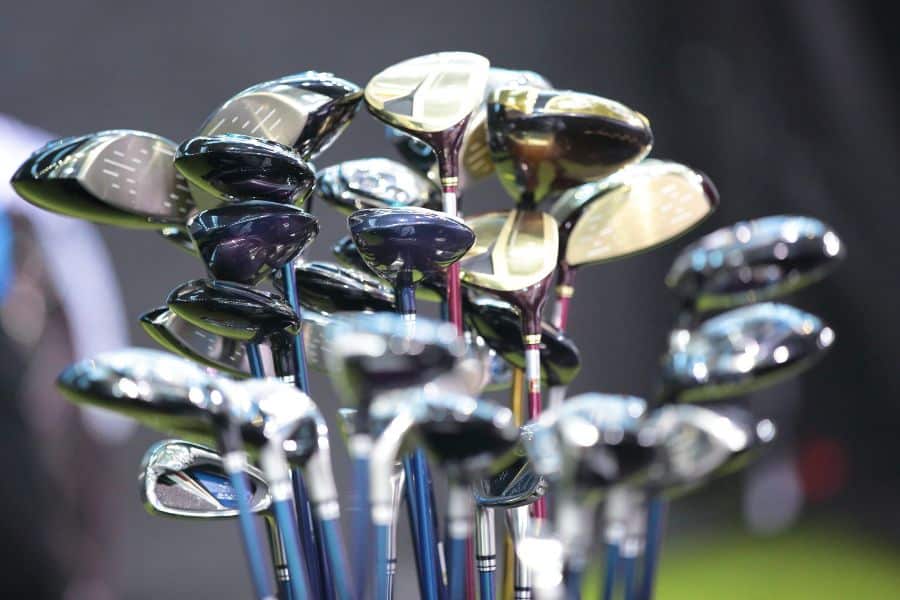

Iron lofts have strengthened over time, particularly in beginner-targeted irons.
Modern irons have fewer loft degrees than their counterparts from the past. This trend allows for softer and higher-launching irons using lower lofts.
Lower lofted irons benefit players with more significant handicaps and novices, promoting easier launch and increased distance.
It is recommended to consult with a club fitter and try different irons to find the best loft options for your game.
Here is a thorough explanation of the standard average loft ranges for various iron clubs are broken down in the following manner:
| Iron Club | Loft Range (Degree) |
| 3-iron | 19-21 |
| 4-iron | 21-24 |
| 5-iron | 24-27 |
| 6-iron | 27-30 |
| 7-iron | 30-34 |
| 8-iron | 34-38 |
| 9- iron | 38-42 |
| Pitching wedge (PW) | 42-46 |
| Gap Wedge (GW) | 46-50 |
| Sand Wedge (SW) | 54-58 |
| Lob Wedge (LW) | 58-64 |
Let’s examine each iron’s loft, performance, and potential to improve your on-course play.
· 1-Iron Loft
The 1-iron is a low-lofted club for long-distance shots, with a loft of 14 to 16 degrees.
Due to its challenging character, it is less frequently found in current golf club sets yet gives the most significant distance and control.
· 2-Iron Loft
The 2-iron balances distance and control with a loft of 16 to 19 degrees.
It is a long iron that emphasizes accuracy and is used for longer approach shots or shots off the tee.
With this club, skilled golfers who consistently hit the ball and have a sufficient clubhead speed can extend their distance.
· 3-Iron Loft
The 3-iron offers distance and control for longer approach shots and has a 19 to 21 degrees loft.
For best outcomes, it necessitates strong ball-striking abilities and sufficient clubhead speed.
The 3-iron’s lower loft results in a lower ball flight. However, some golfers choose to use easier-to-hit clubs instead of the 3-iron due to the difficulty of making consistent contact with the ball and the availability of more forgiving substitutes like hybrids.
· 4-Iron Loft
With a loft of 19 to 24 degrees, the 4-iron offers more extended approach shots, a balance of distance and control.
Good ball-striking techniques and average clubhead speed are necessary.
The ball will fly higher and have more stopping power because of the slightly more excellent loft.
· 5-Iron Loft
A balanced combination of distance and control for approach shots and long approaches from the fairway is provided by the 5-iron, which has a loft of 21 to 27 degrees.
Good ball-striking techniques and average clubhead speed are necessary. The higher loft encourages a higher ball flight and more potent stopping power on the greens.
The 5-iron is a flexible club that works well for a range of short distances.
· 6-Iron Loft
The 6-iron offers a blend of distance, control, and forgiveness with a 24 to 31 degrees loft.
It necessitates good clubhead speed and accurate ball striking. A higher loft produces a higher ball flight and more potent stopping power.
The 6-iron is a flexible club that works well for a range of short distances. Golfers with a mid-handicap score like it.
· 7-Iron Loft
The 7-iron offers a balance of distance, accuracy, and adaptability with a loft of 28 to 35 degrees.
Good ball-striking abilities and a modest clubhead speed are necessary. A higher ball flight and more powerful stopping result from the higher loft.
· 8-Iron Loft
The 8-iron offers accuracy, control, and precision for approach shots and shots from the fairway with a loft of 32 to 39 degrees.
It necessitates good clubhead speed and reliable ball hitting. A higher ball flight and more powerful stopping result from the higher loft.
The 8-iron can be used for short approach shots and strokes that call for accuracy and control.
It offers a fair compromise between distance and control, making it appropriate for golfers of all ability levels.
· 9-Iron Loft
The 9-iron, with a loft of 37 to 43 degrees, offers accuracy, precision, and control for approach approaches and shots close to the green.
The 9-iron is typically employed for controllable, accurate shorter approach shots.
4. Wedge Lofts
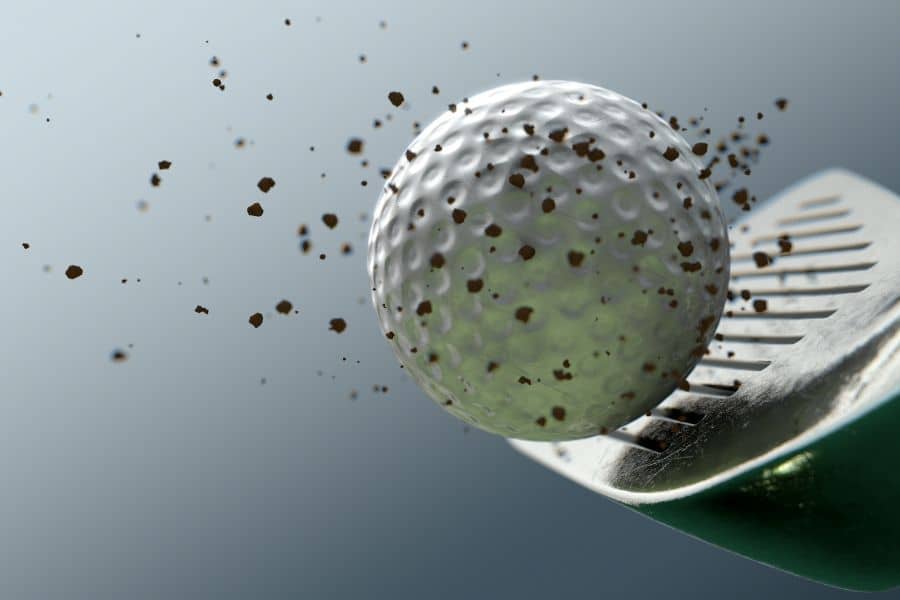

Wedges are specialty golf clubs used for precise distance management and approach around the green. The loft ranges for several kinds of wedges are summarized as follows:
· Pitching Wedge:
The loft of a pitching wedge (PW) typically ranges from 43 to 48 degrees. It provides a good blend of distance and control for approach shots.
· Gap Wedge or Approach Wedge:
The gap wedge, or the approach wedge, has a loft that typically ranges from 50 to 54 degrees.
It bridges the gap between the sand wedge and the pitching wedge and offers versatility for various distances.
· Sand Wedge (SW):
The loft of a sand wedge typically ranges from 54 to 58 degrees.
It has a great loft for getting the ball out of the sand and for high-trajectory shots and is generally utilized for strokes out of bunkers.
· Lob Wedge:
The loft of a lob wedge (LW) ranges typically from 58 to 64 degrees.
It is used for short shots around the green that call for the most height and accuracy and has the highest loft of any wedge.
5. Hybrid Loft
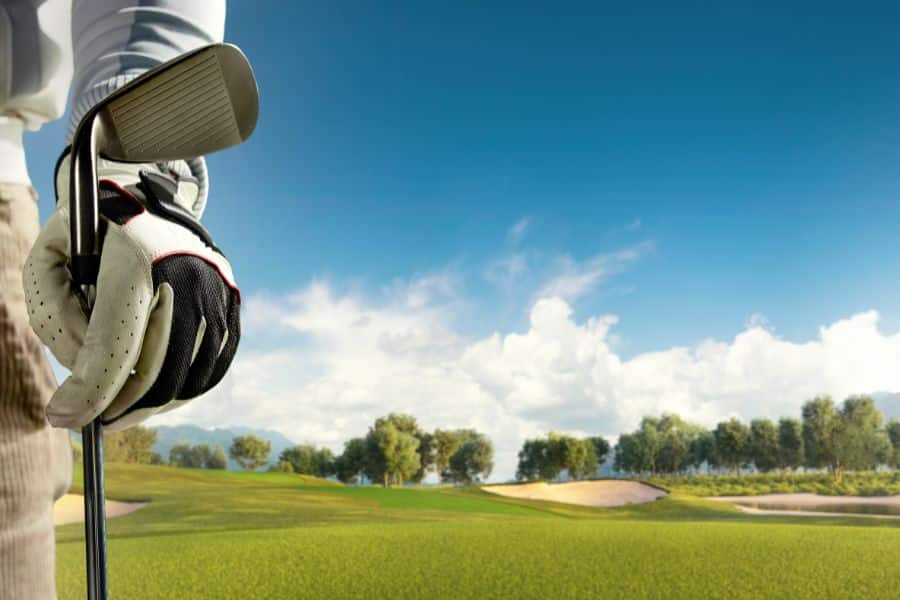

Utility clubs, commonly referred to as hybrid clubs, are made to combine the benefits of both fairway woods and irons.
They provide versatility, forgiveness, and distance in various golfing scenarios. The loft ranges for various hybrid clubs are listed below:
· 2- Hybrid:
The loft of a 2-hybrid range typically from 16 to 19 degrees.
It is intended to replace long irons (like a 2-iron) and offers a more forgiving and easier launch.
· 3-Hybrid:
The loft of a 3-hybrid typically ranges from 19 to 22 degrees.
It is a flexible club between long irons and fairway woods.
· 4-Hybrid:
The loft of a 4-hybrid typically ranges from 22 to 25 degrees, takes the place of the longer irons, and provides a decent balance of distance, control, and forgiveness.
· 5-Hybrid:
The loft of a 5-hybrid range typically from 25 to 28 degrees.
It offers long approach shots that are simple to hit and can also be used off the tee.
· Other Hybrid Lofts:
The 1-hybrid, which has a loft of 14 to 17 degrees and is made for maximum distance off the tee or from the fairway with a low-ball trajectory, is another hybrid club you might encounter.
The 6-hybrid offers versatility for mid-range approach shots with a loft that usually ranges from 28 to 31 degrees.
The 7-hybrid offers extra alternatives for approach shots with higher launch and increased forgiveness because its typical loft ranges from 31 to 34 degrees.
It’s crucial to remember that different manufacturers and models may offer different loft options.
You can determine the best set-up for your game and the course conditions by experimenting with various hybrid lofts and talking to a qualified club fitter.
6. Putter Loft
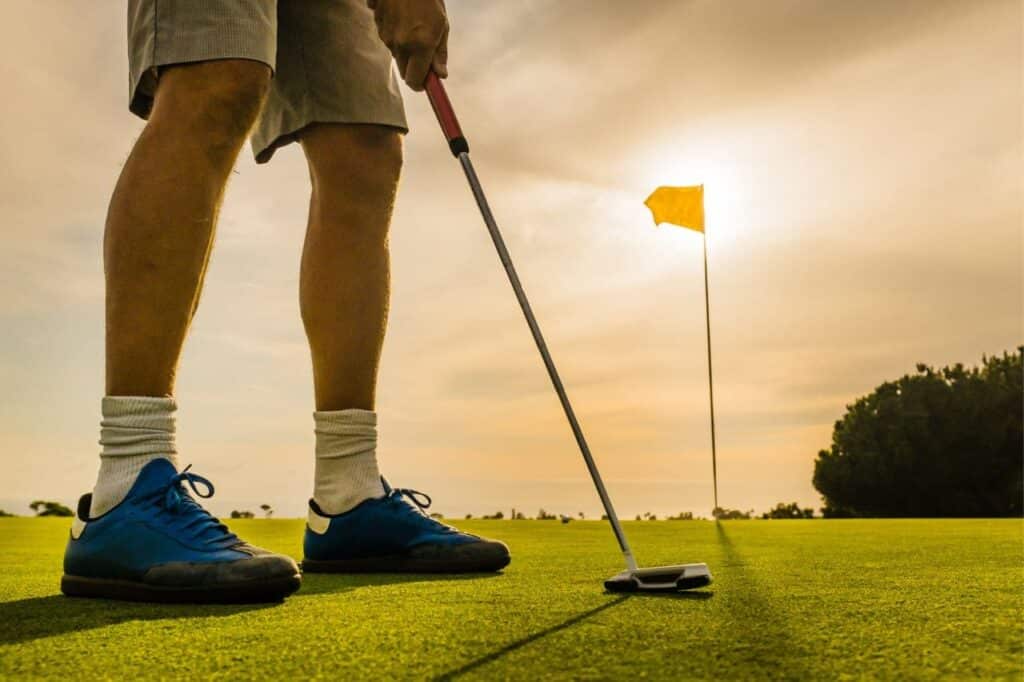

The ball rolls more easily on the green with less excessive hopping or skidding because of the putter’s low or zero loft angle.
Instead of focusing on the loft angle while choosing a putter, players should consider aspects including weight, balance, alignment assistance, and personal choice.
Golfers should select a putter that is easy to hold, fits their putting stroke, and makes them feel confident in their putting skills.
7. Golf Clubs Loft Comparison Table
Here is a simplified loft comparison table for different types of golf clubs:
| Club Type | Loft Range (Degrees) |
| Driver | 9 to 12.5 |
| 3-wood | 13.5 to 16 |
| 5-wood | 17.5 to 19.5 |
| 7-wood | 21 to 22.5 |
| 1-iron | 14 to 16 |
| 2-iron | 16 to 19 |
| 3-iron | 19 to 21 |
| 4-iron | 19 to 24 |
| 5-iron | 21 to 27 |
| 6-iron | 24 to 31 |
| 7-iron | 28 to 35 |
| 8-iron | 32 to 39 |
| 9-iron | 37 to 43 |
| Pitching Wedge (PW) | 43 to 47 |
| Gap Wedge (GW) | 50 to 54 |
| Sand Wedge (SW) | 54 to 58 |
| Lob Wedge (LW) | 58 to 64 |

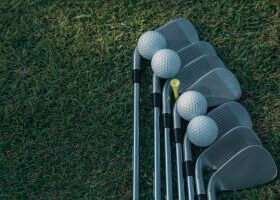

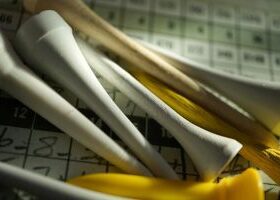
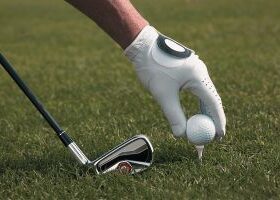

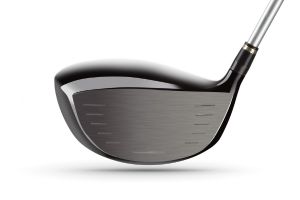


Leave a Reply